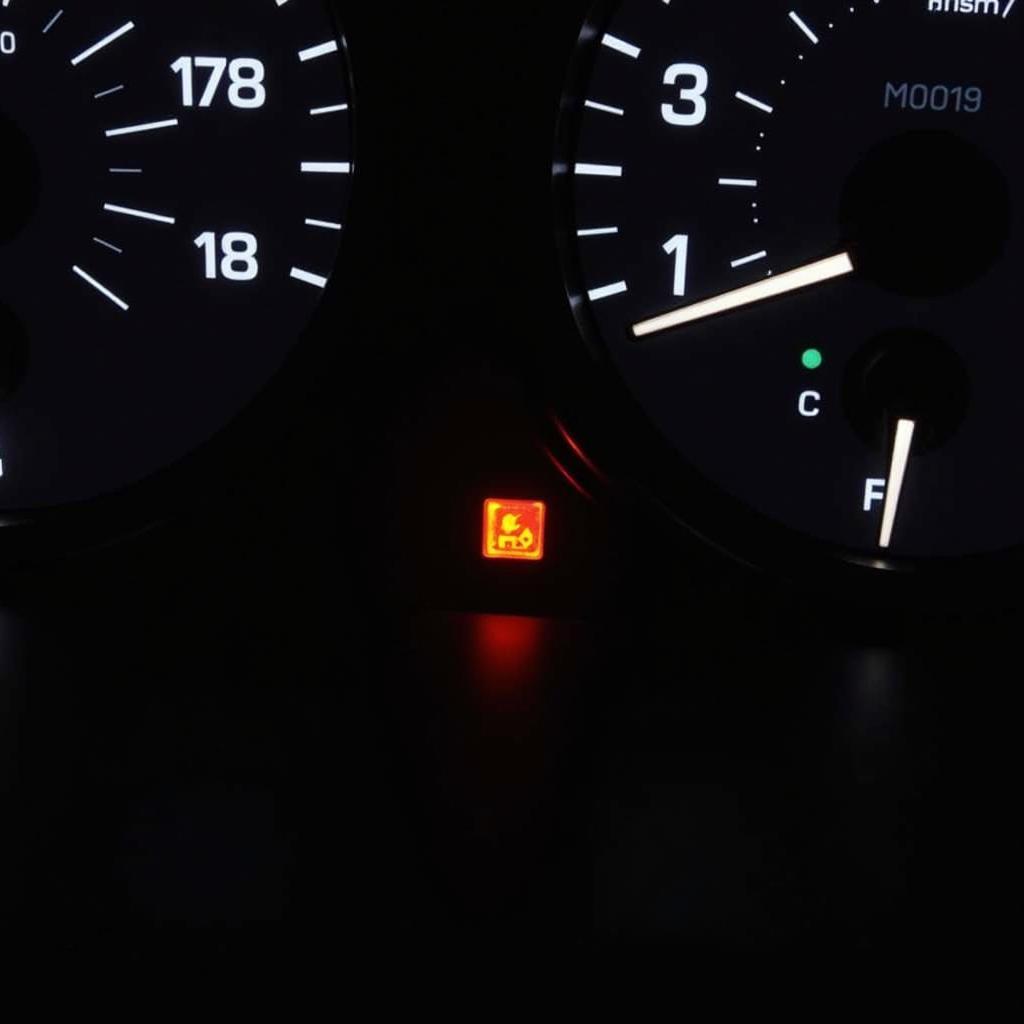Understanding your Car Maintenance Signal is crucial for keeping your vehicle running smoothly and avoiding costly repairs. Whether it’s a flashing light, a cryptic message on your dashboard, or a subtle change in your car’s performance, these signals are your car’s way of communicating its needs. Ignoring them can lead to significant problems down the road. This guide will equip you with the knowledge to interpret these signals and take appropriate action.
Proper maintenance is key to a long-lasting vehicle. Learn more about proper car maintenance drivers ed.
Common Car Maintenance Signals and Their Meanings
Your car uses a variety of signals to indicate maintenance needs. These signals can range from obvious warning lights to more subtle changes in performance. Recognizing these signals is the first step towards addressing potential issues.
Check Engine Light
Perhaps the most notorious car maintenance signal is the check engine light. This light can illuminate for a multitude of reasons, from a loose gas cap to a more serious engine problem. While it can be tempting to ignore, it’s crucial to get it checked out as soon as possible.
Oil Pressure Light
The oil pressure light indicates low oil pressure, a serious issue that can cause significant engine damage if not addressed immediately. If this light comes on, pull over safely and check your oil level.
Temperature Warning Light
An illuminated temperature warning light signals that your engine is overheating. Continuing to drive with an overheating engine can cause irreversible damage. Pull over immediately and allow the engine to cool down before checking the coolant level.
 Low Oil Pressure Warning Light on Car Dashboard
Low Oil Pressure Warning Light on Car Dashboard
What to Do When a Car Maintenance Signal Appears
When a car maintenance signal appears, the best course of action is to consult your owner’s manual. This manual provides specific information about your car’s signals and recommended maintenance procedures.
Consult Your Owner’s Manual
Your owner’s manual is a valuable resource for understanding your car’s maintenance signals. It provides a detailed explanation of each signal and outlines the appropriate steps to take.
Diagnostic Tools
Diagnostic tools, such as OBD-II scanners, can help pinpoint the cause of a check engine light. These tools can read the error codes stored in your car’s computer, providing valuable information for troubleshooting.
Seek Professional Help
If you’re unsure about the meaning of a car maintenance signal or how to address it, it’s always best to seek professional help. A qualified mechanic can diagnose the problem and perform the necessary repairs. Keeping up with regular maintenance can prevent many issues. For tips on petrol car maintenance, see petrol car maintenance tips.
Preventive Car Maintenance: Staying Ahead of the Signals
The best way to deal with car maintenance signals is to prevent them from occurring in the first place. Regular preventive maintenance, as outlined in your owner’s manual, can help keep your car running smoothly and avoid costly repairs. Winterizing your car is also a crucial aspect of preventative maintenance. Learn more about winter time car maintenance.
Regular Oil Changes
Regular oil changes are essential for maintaining engine health. Fresh oil lubricates the engine components, reducing friction and wear.
Tire Rotations and Pressure Checks
Regular tire rotations and pressure checks ensure even tire wear and optimal fuel efficiency. Properly inflated tires also improve handling and safety. Maintaining your car properly is essential for its longevity and your safety. Check out more on proper maintenance of car.
 Checking Car Tire Pressure with a Gauge
Checking Car Tire Pressure with a Gauge
Fluid Checks
Regularly checking and topping off essential fluids, such as coolant, brake fluid, and power steering fluid, helps prevent potential problems.
“Regular maintenance is like giving your car a vitamin boost,” says John Davis, a certified automotive technician with over 20 years of experience. “It keeps everything running smoothly and helps prevent major issues down the road.”
Why is Understanding Car Maintenance Signals Important?
Understanding your car’s maintenance signals is crucial for several reasons: safety, cost savings, and preserving the life of your vehicle. Addressing issues promptly can prevent minor problems from escalating into major, expensive repairs.
What if your car displays a “Maintenance Required” message? Find helpful tips on car says maintenence required.
“Ignoring car maintenance signals is like ignoring a doctor’s advice,” adds Sarah Miller, a seasoned automotive engineer. “It can lead to serious consequences and significantly shorten the lifespan of your vehicle.”
Conclusion
Paying attention to your car maintenance signal is essential for responsible car ownership. Understanding these signals empowers you to take proactive steps to maintain your vehicle and avoid costly repairs. By following the advice in this guide, you can keep your car running smoothly for years to come. For any further assistance, feel free to contact AutoTipPro at +1 (641) 206-8880 or visit our office at 500 N St Mary’s St, San Antonio, TX 78205, United States.




Leave a Reply